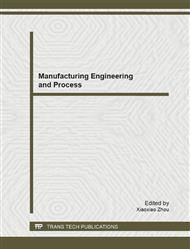p.484
p.489
p.494
p.501
p.512
p.519
p.524
p.534
p.539
Analysis of Cogeneration System in Series Circuit Based on Regenerative Organic Rankine Cycle
Abstract:
In this paper thermodynamic performance of a combined heat and power cogeneration system driven by low-temperature source is investigated. The system consists of regenerative Organic Rankine Cycle (ORC) and an additional process heater as a series circuit. Seven working fluids of isobutene, butane, R11, R123, isopentane, normal pentane, and R113 are considered in this work. Special attention is paid to the effects of system parameters such as the turbine inlet pressure or source temperature on the characteristics of the system such as the ratio of mass flow rates, net work production as well as the efficiencies of the first and second laws of thermodynamics for various working fluids. This study finds that higher turbine inlet pressure leads to lower second law efficiency of ORC system but higher that of the combined system. Results also show that the optimum working fluid varies with the source temperature.
Info:
Periodical:
Pages:
519-523
Citation:
Online since:
April 2012
Authors:
Keywords:
Price:
Сopyright:
© 2012 Trans Tech Publications Ltd. All Rights Reserved
Share:
Citation:


